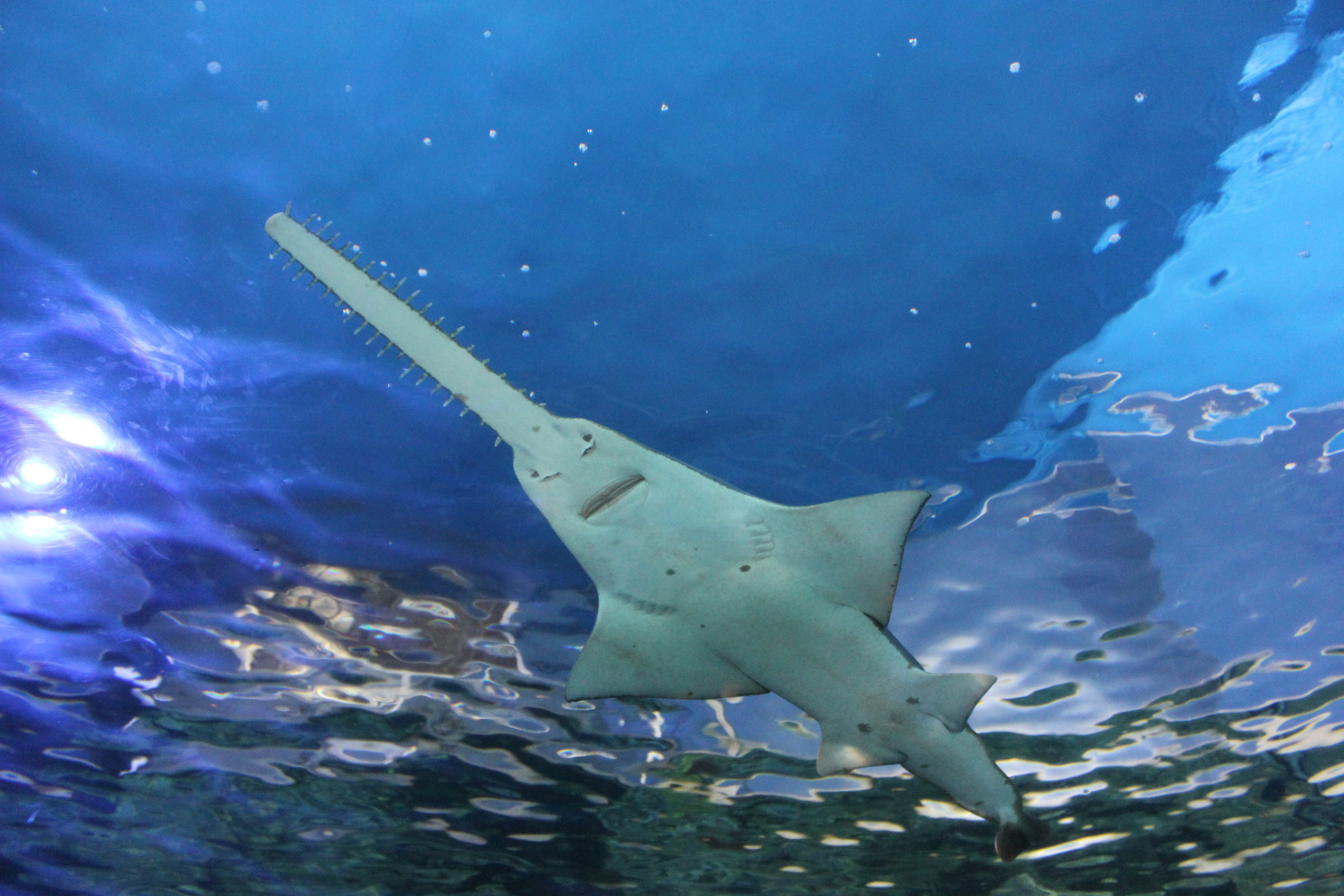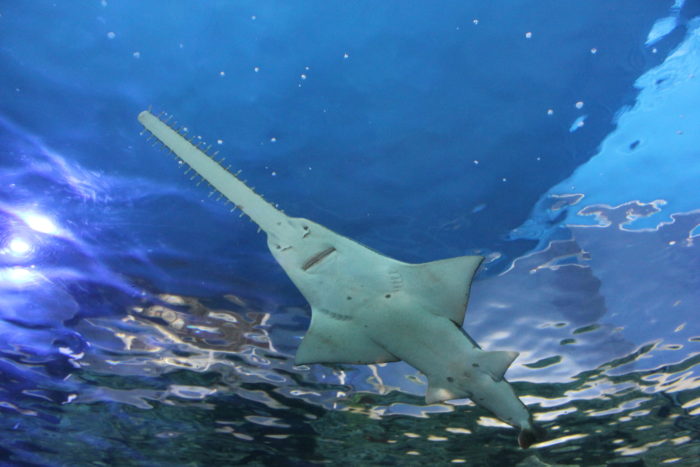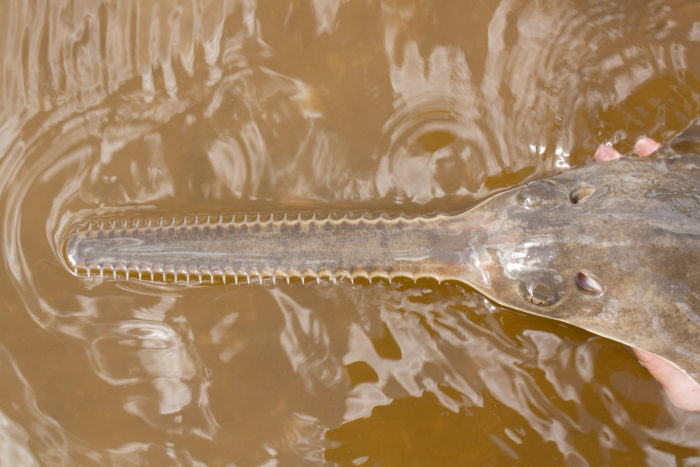
Sea Wonder: Smalltooth Sawfish

A smalltooth sawfish seen from below while swimming. Photo credit: Holiday Point
The smalltooth sawfish (Pristis pectinata) is an elasmobranch related to skates, rays, and sharks, and is only one of five species of sawfishes.
DESCRIPTION
Smalltooth sawfish is one of the larger sawfish species, reaching lengths of about 18 feet (25 percent of which is their rostrum or snout) and weights of nearly 700 pounds! Their bodies are flattened with wing-like pectoral fins. They are an olive-brown color on their backs and a whiter underside. These fish have a very distinct snout, which resembles a long, flat saw. Along the edges of its rostrum are teeth-like structures called denticles around the edge and between 10 and 12 rows of teeth in their mouths. True to its name, the smalltooth sawfish has smaller teeth than other species of its family.
DIET & HABITAT
Smalltooth sawfish eat small fish and shellfish like shrimp and crabs, and they use their long rostrums to both find and stun their prey. Like other elasmobranchs, they make use of organs called “ampullae of Lorenzini”, which help them sense electrical fields naturally created by fish and invertebrates. Once they sense prey nearby or buried in the sediment they swish their rostrums from side to side, which allows them to stab and catch fishes on their rostral teeth or catch crustaceans they stir up.
The smalltooth sawfish’s natural range spans from the waters off North Carolina and throughout the Gulf of Mexico. Today, they are limited to the waters of South Florida. In fact, the Ten Thousand Islands area off the peninsula’s southern tip is one of the only places where the species is common.
Smalltooth sawfish can thrive in shallow estuarine and coastal waters like bays, lagoons, rivers, and muddy shorelines. Juveniles make use of coastal vegetation like mangrove forests as nursery grounds due to the protections they provide. As they grow, adults move to deeper and saltier waters like mud banks, seagrass beds, sand flats, and coral reefs.
LIFE HISTORY
Smalltooth sawfish reproduce via internal fertilization, which results in between 15 and 20 embryos on average. Sawfish are ovoviviparous, meaning females carry developing embryos internally and give birth to live pups. The pups’ saws are fully developed but they do not have denticles to prevent injuries to their mother during birth. Once pups are born, they are independent and do not receive any parental care. They reach reproductive maturity at around 10 years old and can live to be as old as 30 years old.
THREATS & CONSERVATION
Scientists and conservation experts consider the smalltooth sawfish to be critically endangered. It is the first elasmobranch and first marine fish species to receive protections from the Endangered Species Act of 1972. Internationally, the species is protected under Appendix I of the Convention of International Trade of Endangered Species (CITES). No legal or permitted fisheries targeting this species exist, but accidental bycatch in fishing gear does occur.
There are several drivers of population decline in smalltooth sawfish populations. They include historic overfishing and entrapment in fishing gear, loss of coastal mangrove forests, and increased coastal development. The last remaining population in U.S. waters is in South Florida, a very small remnant of a species that once spanned from North Carolina to Texas. The establishment of marine protected areas, actions against entangling fishing gear in Florida, and actions at the federal level have helped to slow the decline of smalltooth sawfish.

A close-up view of a smalltooth sawfish’s rostrum (or saw), which inspired their name. Photo credit: FWC Fish and Wildlife Research Institute
